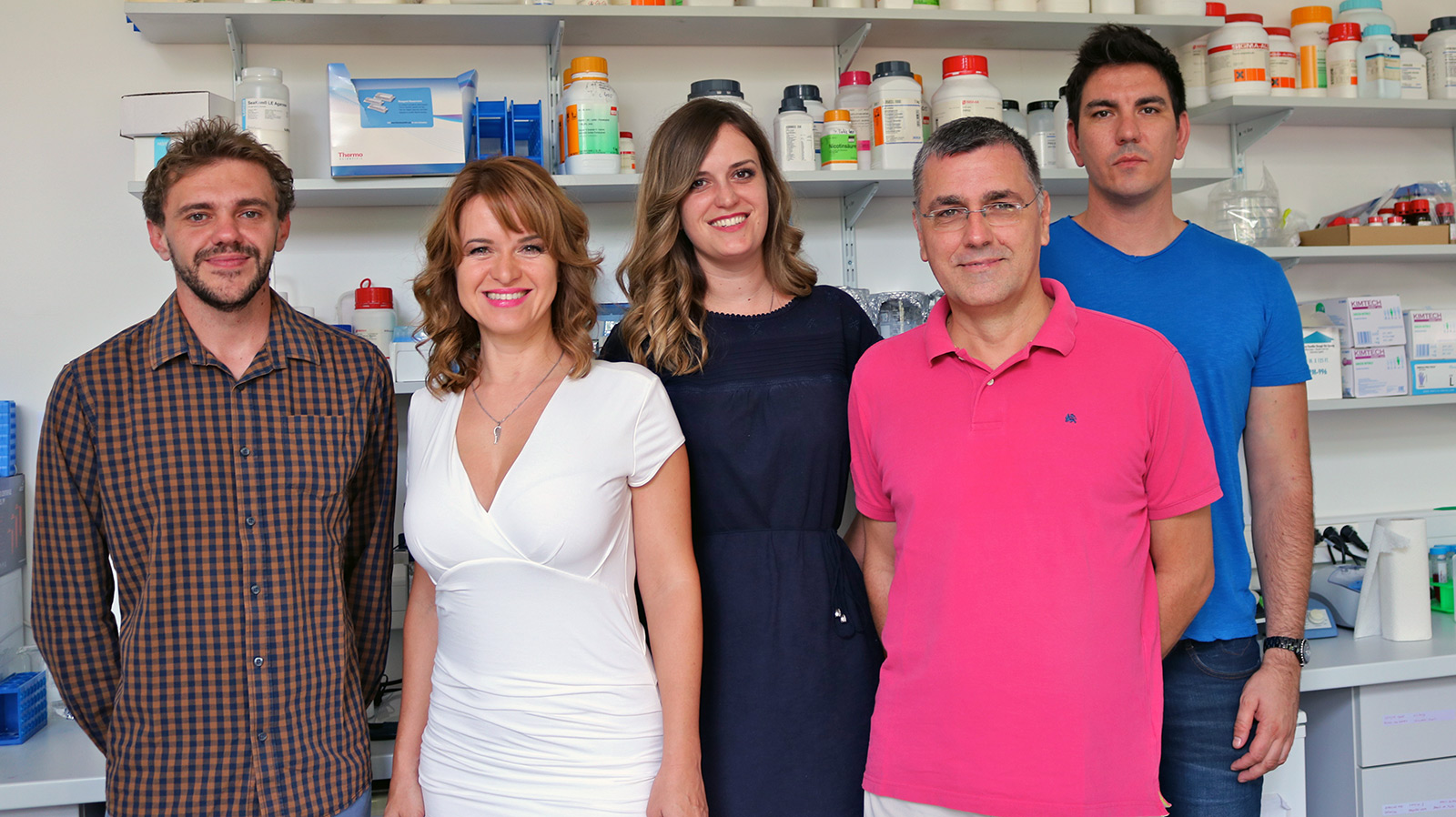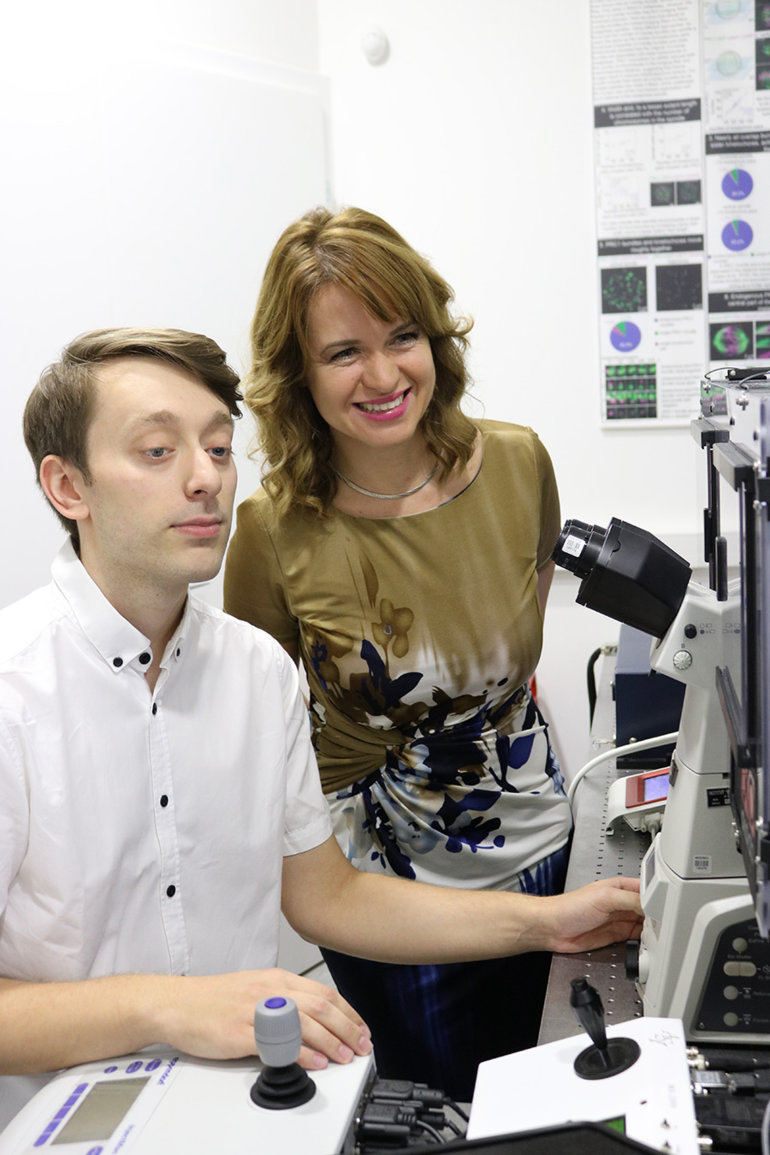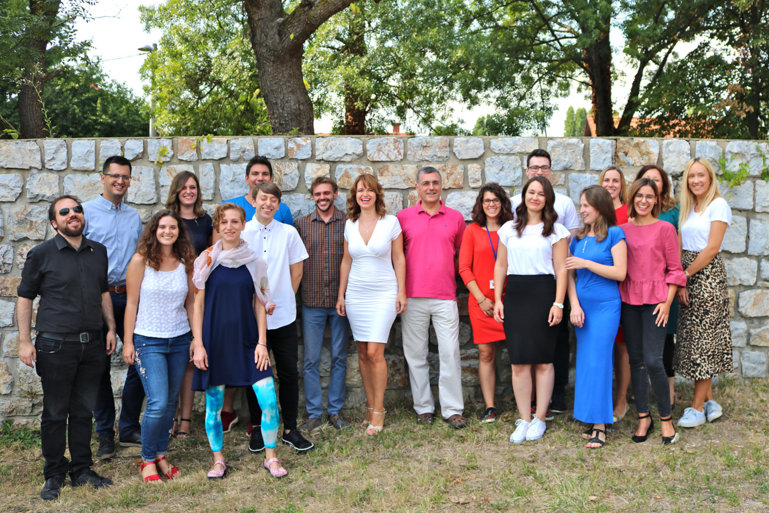‘’Chirality means that an object is not the same as its mirror image. The most common example of chirality are our hands. Namely, although the left hand is a mirror image of the right hand, the two hands cannot be superimposed because of their asymmetry. Chirality is a feature of many phenomena in the natural world. Many biologically important molecules are chiral. In some cases, such as a snail's shell or grape vine tendril, chirality exists at the level of an organ or even the whole organism. In this paper we found chirality on a level between the one of the molecule and a living organism, namely, at the cell level. Our experiments have revealed that the mitotic spindle is a chiral object." - explains Prof Tolić.
The spindle is a complex and dynamic structure made of microtubules. These are thin protein tubes that separate the genetic material. "So far it has been thought that microtubules have a shape like meridians on the Earth's surface, which means that they go straight along the surface from one pole to the other. However, our results show that microtubules do not go straight, but are twisted in the shape of a left-handed helix.
This discovery has opened a variety of questions including how the twisted shape of microtubules is generated at the molecular level, and how it affects chromosome segregation. This will be the focus of our further research.''- concludes Prof Tolić.
This study was an interdisciplinary investigation in which scientists have combined cell biology and genetics with theoretical physics, while applying the most advanced techniques of microscopy. However, the most exciting aspect is that it all started with the theoretical model, which is not a common case in cell biology.
"We started this project five years ago with an aim to understand the forces in the mitotic spindle. We were trying to predict what forces act in the spindle by studying its shape. At that time, we developed a theory that followed the experimental results. However, besides confirming the existence of linear forces in the spindle, this theory also predicted the existence of torques, which were not yet experimentally found, thus indicating that the mitotic spindle could be of a chiral structure.
This was extremely exciting for my team and we are especially proud that in this case the theory was one-step ahead of the experiment, and actually motivated experiments, which is not a common case in biology.’’ - explains professor Pavin and continues, "It is important to emphasize that this study provides a nice example of how two different disciplines such as experimental biology and theoretical physics can complement each other and lead to results that only one discipline alone could not achieve.’’ - concluded Prof Pavin.
Professor Pavin and professor Tolić are especially proud of the work done by their PhD students and postdoctoral researchers Maja Novak, Bruno Polak, Juraj Simunić, Zvonimir Boban and Barbara Kuzmić.
This new study is a continuation of many years of research and a number of successful papers published in the renowned scientific journals such as Nature Communications, Nature Cell Biology, Cell, Developmental Cell, Molecular Biology of the Cell and Physical Review Letters. Moreover, professors Tolić and Pavin have been awarded numerous awards for their research, including the National Science Award of the Republic of Croatia, awarded to them together in 2016, and Ignaz Lieben Award of the Austrian Academy of Sciences, awarded to Prof Tolić in 2017.
This research was supported by several grants including the prestigious grant by the European Research Council (ERC) worth over two million euros, awarded to Prof Tolić three years ago.




